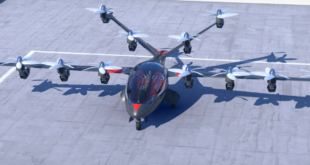Related Articles
Introduction:
In the realm of propulsion systems, traditional combustion methods have long relied on deflagration, a process that involves the relatively slow, subsonic burning of fuel. However, a groundbreaking alternative has emerged in the form of detonation-driven propulsion, which harnesses the power of shock waves to accelerate the oxidation of fuel-air mixtures. Originally studied decades ago, this technology is experiencing a resurgence today, promising to revolutionize various fields, from aerospace to power generation.
The Evolution of Combustion:
Conventionally, combustors have taken the form of volumetric cylinders, converting chemical energy into thermal and mechanical energy through deflagrating combustion. This process involves the gradual, subsonic propagation of flame fronts through the fuel-air mixture. While effective, deflagration has limitations in terms of efficiency and speed.
Enter Detonation-Based Combustion:
Detonation-based combustion represents a paradigm shift in propulsion technology. Rather than relying on slow-burning flames, detonation-driven systems utilize shock waves to rapidly ignite and propagate the combustion process. This approach, initially explored at the University of Michigan in the 1960s and ’70s, is garnering renewed interest for its transformative potential.
Resurgence and Applications:
In recent years, detonation-driven propulsion has found application across a diverse range of industries:
- Aerospace: In the quest for hypersonic flight, where speed is paramount, detonation-based engines offer unparalleled performance. Their ability to generate intense shock waves enables aircraft to achieve unprecedented velocities, paving the way for faster, more efficient air travel.
- Power Generation: Detonation-driven combustion is also being investigated for power generation applications. By harnessing the explosive energy released during detonation, researchers aim to develop next-generation turbines capable of producing electricity more efficiently and sustainably.
- Automotive: In the automotive sector, detonation-driven engines hold the promise of enhanced fuel efficiency and reduced emissions. By optimizing the combustion process to operate at detonation speeds, vehicles could achieve greater power output with lower fuel consumption.
- Space Exploration: The unique characteristics of detonation-driven propulsion make it well-suited for space exploration missions. By delivering high thrust-to-weight ratios and rapid acceleration, these engines could revolutionize the efficiency and cost-effectiveness of space travel.
Detonation-based device for novel propulsion applications
The University of Michigan, in collaboration with Purdue University and the Air Force Research Laboratory, has developed a groundbreaking detonation-driven propulsion system that challenges traditional combustion methods. This technology, initially explored in the 1960s and ’70s, is experiencing a resurgence due to its potential applications in power generation and hypersonic flight.
Led by Michael Ullman and Venkat Raman, the research team studied a new form factor for detonation-driven propulsion, utilizing a linear array of injectors to sustain fast-moving shock waves in a rectangular domain. This novel approach, detailed in the journal Combustion and Flame, marks the first time a linear combustor has been studied computationally at this level of detail.
The device consists of fuel and air injectors arranged linearly at the base of a rectangular box. Once ignited, a propagating detonation wave is established, generating high power per unit volume of combustor. This shock wave travels at nearly 1.5 km/s, compressing and reacting gases before being exhausted to produce thrust.
The computational simulation approach developed by Raman’s team, validated with experimental data from Purdue University, provided crucial insights into the mechanism for detonation stabilization. According to Venkat Raman, the linear system holds potential for improving efficiency, enabling hypersonic flight, and providing on-demand thrust for small aircraft or drones.
Overall, this research highlights the untapped potential of detonation-driven propulsion and demonstrates novel applications that showcase its advantages. With ongoing advancements, this technology could revolutionize propulsion systems and pave the way for exciting new developments in aerospace and beyond.
Challenges and Future Prospects:
While detonation-driven propulsion offers numerous advantages, significant challenges remain. Engine design, fuel optimization, and mitigation of undesirable effects such as engine knock are among the key areas of focus for researchers. However, with ongoing advancements in materials science, computational modeling, and experimental testing, the future looks promising for this innovative technology.
Conclusion:
Detonation-driven propulsion represents a paradigm shift in the field of combustion and propulsion. By harnessing shock waves to ignite and accelerate the combustion process, this technology offers unparalleled speed, efficiency, and versatility. From hypersonic aircraft to sustainable power generation, the applications of detonation-driven propulsion are vast and promising. As research and development efforts continue to advance, we can expect to see this revolutionary technology propel us into a new era of innovation and exploration.
References nd Resources also include:
https://techxplore.com/news/2023-11-detonation-based-device-propulsion-applications.html
 International Defense Security & Technology Your trusted Source for News, Research and Analysis
International Defense Security & Technology Your trusted Source for News, Research and Analysis
